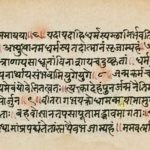An excellent way to begin studying the Bible would be to take a particular book and focus on it for a period of time. For example, if one were going to do a detailed study on one of the Apostle Paul’s letters, he or she might start with the letter to the Galatians. This is a good one to start with because it was one of Paul’s earliest letters, it is fairly short, and the subject matter is very important.
To get a good feel for the letter, it should be read through in one sitting. It would take someone about 20 minutes to read Galatians through. If the person would read Galatians through in its entirety several times, he or she would begin to get an idea of what the book is about. If the person reads the entire book once a day for a week, this would be a good start to the study.
Background on the book
After several full readings, it is time to get some background on the book. There are many sources available where one could go to get some help for his or her study. This article on Galatians is a good starting point. Another excellent link for Bible Study is BibleStudyTools.com. This excellent site provides commentaries, different Bible translations and other tools to assist in a study of the Scripture. One last website to help with Bible study is The New Testament Gateway. There is also an Old Testament version.
 These sites provide background information and detailed study material on the book that one is studying. In the case of Galatians, one can easily find out about the circumstances of Paul’s ministry in that region, the churches that he planted and the reason for this letter. Because the student has read the book several times and has already seen the basic themes, this background study will help fill out his or her knowledge and understanding of the book. This is a good time to start taking some notes. An online program like Evernote or an actual pen and notebook will both work. The important thing is that the student begins to write down what he or she is learning, insights that he or she has gained and ways in which he or she is studying can be applied.
These sites provide background information and detailed study material on the book that one is studying. In the case of Galatians, one can easily find out about the circumstances of Paul’s ministry in that region, the churches that he planted and the reason for this letter. Because the student has read the book several times and has already seen the basic themes, this background study will help fill out his or her knowledge and understanding of the book. This is a good time to start taking some notes. An online program like Evernote or an actual pen and notebook will both work. The important thing is that the student begins to write down what he or she is learning, insights that he or she has gained and ways in which he or she is studying can be applied.
After the student has explored some material on the author of the book, the circumstances for his writing, and the audience that was being written to, he or she should read the book through in its entirety again. Armed with this new knowledge, the student should find the document beginning to come alive with meaning. It is now time for the student to become more specific in his or her study.
The book should be broken down into smaller sections.
For a letter like Galatians, this can easily be done by chapters. As each chapter is read, the student can look for one or two main points of that chapter. What truth is Paul trying to communicate? How does he drive that point home to his audience? How does that truly relate to the modern reader?
The student should answer those important questions in his or her notes as he or she focuses on each chapter. After working through the book by chapters over a period of a few weeks, the student might want to break the chapters down even further, demanding on their length. Picking a key verse or two from each chapter will help reinforce the main themes of those chapters. Actually memorizing verses or key passages from the book will also serve to help the student internalize the Scriptures that they are studying.
A second popular Bible study method is a thematic approach. In this type of study, the student will trace a theme throughout the Scriptures, rather than just focusing on one book. This can lead to very interesting discoveries, but it is a much more involved type of Bible study.
 One interesting theme that one might want to consider is the miracles of Jesus. Jesus performed many miraculous signs and healings in all four of the Gospels, Matthew, Mark, Luke, and John. Each writer presented them a little differently, however, depending on the point he was trying to make and depending on to whom he was writing. This article provides a good starting point for a study on Jesus’ miracles.
One interesting theme that one might want to consider is the miracles of Jesus. Jesus performed many miraculous signs and healings in all four of the Gospels, Matthew, Mark, Luke, and John. Each writer presented them a little differently, however, depending on the point he was trying to make and depending on to whom he was writing. This article provides a good starting point for a study on Jesus’ miracles.
A good place to begin a study like this is to examine the miracles that are common in more than one Gospel. Because Matthew, Mark, and Luke are so similar, they have much common material. Markis commonly accepted as being the first Gospel was written and the one that Matthew and Luke draw heavily on. Each Gospel, for example, presents the feeding of the 5,000 people. At the same time, each author frames the story for his particular audience.
In John’spresentation of the feeding of the 5,000, he presents more of Jesus’ teaching surrounding the event. John’s Gospel is written to lead people to faith in Christ, so the writer often explains the spiritual significance of the miracle. John goes to great lengths to help the reader understand that this miracle is more than just Jesus’ miraculously feeding some hungry people. It is about the fact that the true Bread of Life, Jesus himself, has been sent to Earth to save mankind. The other Gospel writers present the same miracle but let the sign speak for itself instead of trying to interpret it.
For this kind of study, it is recommended that the reader use the study tools listed above to find where all of the common miracles are in the Gospels. Reading each account multiple times will allow the person to see the similarities and differences. These insights should be written down or stored in their online notes. The next step would be to use some Bible dictionaries and biblical commentaries to see what others say about these miracles.
After one has taken a thorough look at the miracles that the Gospels have in common, it might be interesting to examine those miracles that are only listed in a single Gospel. Matthew, for example, is the only book to record Peter’s walking on the water after Jesus had fed the 5,000 people. John presents several miracles that are not listed in the other Gospels. The same methods could be used to study these miracles. The reader might then explore why the author included that particular miracle.
A study of Jesus’ miracles, like any other study, should seek to understand what message the author was trying to convey to his original hearers. The next step would be to see what applications a modern reader might draw from the study. A final step of any type of Bible study would be for the student to begin to apply the fresh truths of God’s Word to his or her life.






